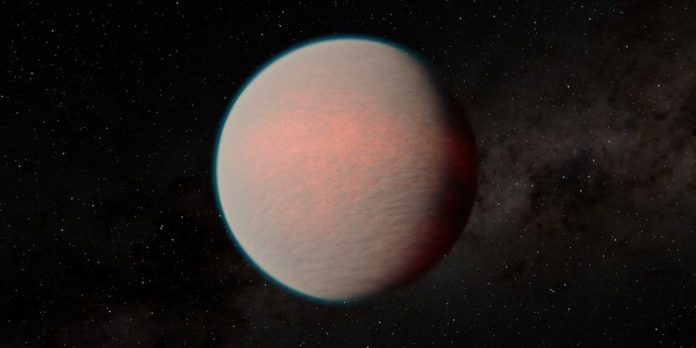
When you walk across your lawn or down the street, you move on the surface of a surprisingly layered world. Some of those layers are rock, others are molten.
A surprising amount of water is mixed into those layers, as well. It turns out that most planets have more of it “deep down” than we imagined.
Most of a planet’s water isn’t on the surface, even though we see oceans, lakes, and rivers here on Earth.
The heart of our planet is iron, and covered by silicate rock layers. Scientists have long used our planet’s makeup as a sort of “model” for rocky exoplanets around other stars.
That model may be outdated and too simplistic, according to Professor Caroline Dorn at ETH Zurich.
“It is only in recent years that we have begun to realize that planets are more complex than we had thought,” she said.
Dorn has been collaborating with Haiyang Luo and Jie Deng from Princeton University to understand the distribution of water mixed with silicates and iron inside a planet.
They used computer simulations to come up with a robust model of the distribution of water on exoplanets.
Recent investigations of Earth’s water content triggered the team’s work. It turned out that our oceans contain only a small fraction of the overall water budget.
The interior could be hiding the equivalent of 80% of the surface oceans. That raised a big question: could other planets have similarly hidden reservoirs?
Planets and Water
To answer that question, the science team simulated how water behaves in the conditions present when planets are young. Many known exoplanets orbit close to their stars, which means they’re likely to be hot worlds. They probably have oceans of molten magma that haven’t yet solidified to make silicate bedrock mantles.
As it turns out water dissolves very well in these magma oceans. The iron core takes time to develop,” she said.
“A large share of the iron is initially contained in the hot magma soup in the form of droplets,” she explained, noting that water sequestered in this soup combines with the iron droplets and sinks with them to the core. “The iron droplets behave like a lift that is conveyed downwards by the water,” Dorn said.
That kind of mixing of iron and water happened in the moderate pressure environment in Earth’s interior. Larger planets with higher interior pressures presented a challenge to understand.
It turns out they mix water and iron, too. “The larger the planet and the greater its mass, the more the water tends to go with the iron droplets and become integrated in the core,” said Dorn.
“Under certain circumstances, iron can absorb up to 70 times more water than silicates. However, owing to the enormous pressure at the core, the water no longer takes the form of H2O molecules but is present in hydrogen and oxygen.”
Evolving Planets over Time
This result is a big deal if you want to understand how planets form and develop. That’s because the water never escapes the planet’s core.
However, under the right conditions, water mixed in with the magma ocean can “de-gas” under the right conditions.
Essentially, it separates and rises to the surface as the magma cools and forms the mantle. “So if we find water in a planet’s atmosphere, there is probably a great deal more in its interior,” explained Dorn.
That gives a lot of new information to use as scientists search for planets around other stars and look for habitable worlds. In particular, astronomers using the JWST can track the types of molecules in exoplanet atmospheres and use that information to find habitable worlds.
“Only the composition of the upper atmosphere of exoplanets can be measured directly,” said Dorn. “Our group wishes to make the connection from the atmosphere to the inner depths of celestial bodies.”
Currently, the team studies exoplanet TOI-270d. “Evidence has been collected there of the actual existence of such interactions between the magma ocean in its interior and the atmosphere,” said Dorn.
It’s at the top of her list of interesting objects to examine more closely for water, along with another one called K2-18b. It seems to be a promising candidate for habitability as well.
So, Does Deep Water Imply Life or Habitability?
Since water is important in the search for life-bearing worlds, looking for wet Earth-type and super-Earth worlds is the next step in searching out life.
Dorn’s team found that planets with these deep water layers are likely to be fairly rare. That’s because most of their water is not on the surface. In other words, they may not be ocean worlds, but places with water trapped in their cores.
That’s not all bad. The science team assumes that even planets with a relatively high water content could have the potential to develop Earth-like habitable conditions. Dorn’s team may give scientists new ways to look for water-abundant worlds.
Written by Carolyn Collins Petersen/ Universe Today.



